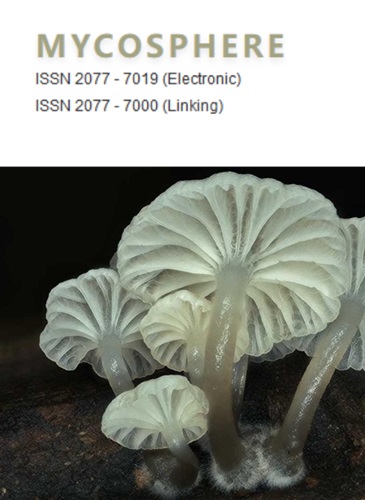Unexpected Nectriaceae species diversity in cheese, description of Bisifusarium allantoides sp. nov., Bisifusarium penicilloides sp. nov., Longinectria gen. nov. lagenoides sp. nov. and Longinectria verticilliforme sp. nov
IF 15.1
1区 生物学
Q1 MYCOLOGY
引用次数: 5
Abstract
Investigation of various cheese rinds for Bisifusarium domesticum revealed a completely unexpected diversity of Fusarium-like fungi. Elongation factor 1-alpha gene sequence data, classically used for Fusarium spp. identification, suggested that some isolates corresponded to so far undescribed Nectriaceae species. In this context, a multi-gene phylogenetic analysis, based on ten loci, namely the large subunit of the ATP citrate lyase (acl1), alpha-actin (act), calmodulin (cmdA), histone H3 (his3), the internal transcribed spacer region and intervening 5.8S nrRNA (ITS), 28S large subunit (LSU), RNA polymerase II largest subunit (rpb1), RNA polymerase II second largest subunit (rpb2), translation elongation factor 1-alpha (tef1) and β-tubulin (tub2), was therefore performed to determine the phylogenetic position of ten cheese and one environmental isolates. Phylogenetic reconstructions were then done using a Nectriaceae sequence dataset. Additionally, morphological observations as well as metabolite profiling were performed. Results clearly revealed the existence of four novel cheese-associated species, namely Bisifusarium allantoides, Bisifusarium penicilloides, Longinectria lagenoides, Longinectria verticilliforme, the two latter belonging to a novel genus (Longinectria gen. nov.).奶酪中意想不到的猕猴桃科物种多样性——尿囊双孢菌、青霉菌双孢菌、长叶双孢菌和垂直长叶双孢菌的描述
对各种奶酪皮的调查发现了一种完全出乎意料的镰刀菌样真菌的多样性。通常用于镰刀菌鉴定的延伸因子1- α基因序列数据表明,一些分离物对应于迄今未描述的镰刀菌科物种。在此背景下,基于10个位点的多基因系统发育分析,分别是ATP柠檬酸裂解酶大亚基(acl1)、α -肌动蛋白(act)、钙调蛋白(cmdA)、组蛋白H3 (his3)、内部转录间隔区和介入的5.8S nrRNA (ITS)、28S大亚基(LSU)、RNA聚合酶II最大亚基(rpb1)、RNA聚合酶II第二大亚基(rpb2)、翻译伸长因子1- α (tef1)和β-微管蛋白(tub2),因此,确定了10个干酪和1个环境分离株的系统发育位置。系统发育的重建,然后使用一个Nectriaceae序列数据集。此外,形态学观察以及代谢物分析进行。结果明确发现了4个干酪相关新种,即尿囊双孢霉、青霉双孢霉、lagenoides双孢霉和verticilliformlonginecia,后者属于一个新属(Longinectria gen. 11 .)。
本文章由计算机程序翻译,如有差异,请以英文原文为准。
求助全文
约1分钟内获得全文
求助全文
来源期刊

Mycosphere
MYCOLOGY-
CiteScore
30.00
自引率
8.20%
发文量
9
审稿时长
4 weeks
期刊介绍:
Mycosphere stands as an international, peer-reviewed journal committed to the rapid dissemination of high-quality papers on fungal biology. Embracing an open-access approach, Mycosphere serves as a dedicated platform for the mycology community, ensuring swift publication of their valuable contributions. All submitted manuscripts undergo a thorough peer-review process before acceptance, with authors retaining copyright.
Key highlights of Mycosphere's publication include:
- Peer-reviewed manuscripts and monographs
- Open access, fostering accessibility and dissemination of knowledge
- Swift turnaround, facilitating timely sharing of research findings
- For information regarding open access charges, refer to the instructions for authors
- Special volumes, offering a platform for thematic collections and focused contributions.
Mycosphere is dedicated to promoting the accessibility and advancement of fungal biology through its inclusive and efficient publishing process.
 求助内容:
求助内容: 应助结果提醒方式:
应助结果提醒方式:


